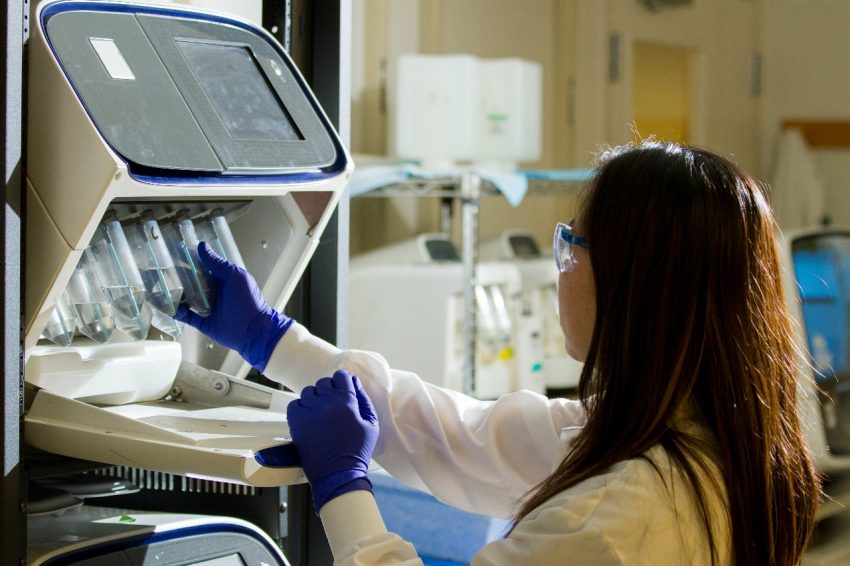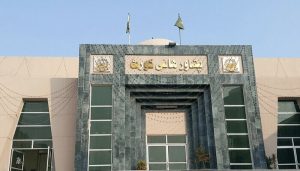The exposure of peptides to research models in laboratory settings has gained significant attention in recent years, with PEG-MGF (Pegylated Mechano Growth Factor) emerging as a peptide of interest. This modified version of the Mechano Growth Factor (MGF) is theorized to exhibit properties that might support tissue regeneration, cellular repair, and adaptation in response to physical stimuli.
This article intends to explore the speculative mechanisms through which PEG-MGF may impact cellular processes and delves into its potential research implications, particularly in the context of regenerative studies, tissue repair, and cellular age-related degeneration of muscle cells.
PEG-MGF Peptide: Introduction
In the field of regenerative biology, peptides have emerged as molecules of considerable interest for their possible role in modulating cellular activity. PEG-MGF, or Pegylated Mechano Growth Factor, represents a specific derivative of MGF, a splice variant of the Insulin-like Growth Factor-1 (IGF-1) gene.
The pegylation process—attaching a polyethylene glycol (PEG) moiety to the MGF peptide— is believed to prolong the peptide’s bioavailability, potentially extending its impact within tissue environments. While PEG-MGF has been largely explored for its possible role in cell regeneration, its theoretical implications might extend far beyond muscular tissue, presenting intriguing possibilities for broader fields of research.
PEG-MGF Peptide: Molecular Mechanisms
Studies suggest that PEG-MGF may be structurally similar to the native MGF, which is produced in response to mechanical stress or tissue damage. Upon mechanical stress—such as that experienced during exercise or tissue injury—cells express MGF to assist in the repair and adaptation of tissues. The attachment of a PEG molecule to MGF is hypothesized to increase its half-life, allowing it to remain active for a longer duration in the extracellular environment, which may support prolonged signaling cascades.
The peptide is believed to interact with the IGF-1 receptor, potentially leading to downstream signaling that impacts various cellular processes such as proliferation, differentiation, and survival. While IGF-1 is traditionally linked to anabolic processes in muscular tissue, MGF appears to specifically upregulate pathways associated with local tissue repair, independent of the systemic actions of IGF-1. This localized response is theorized to activate satellite cells, a type of stem cell that may play a critical role in tissue regeneration. Research indicates that PEG-MGF’s prolonged stability might support this satellite cell activation process, potentially leading to more sustained tissue repair and adaptation in response to damage or stress.
PEG-MGF Peptide: Potential Research Implications
● Muscular Tissue
The most widely discussed potential implication for PEG-MGF lies in its alleged role in supporting muscle cell regeneration and repair. Theoretical models suggest that by activating satellite cells, PEG-MGF may facilitate the repair of damaged muscular tissue fibers and promote the growth of new fibers. This satellite cell activation is particularly relevant for research on conditions such as wasting of muscular tissue, injury recovery, and cellular age-related sarcopenia, where atrophy of muscular tissue is a concern. Investigations purport that PEG-MGF might offer a promising avenue for research on interventions aimed at mitigating muscular tissue degeneration in such contexts.
It is theorized that the peptide may play a significant role in regenerative processes after trauma-induced damage to muscular tissue. Muscular tissue fibers experience micro-tears and localized damage during mechanical exertion or injury. Researchers are interested in the potential of PEG-MGF to encourage efficient muscular tissue repair and support adaptation to physical stress, which may be of particular interest in the fields of science and trauma recovery.
● Cardiac Tissue
In addition to skeletal muscular tissue, there is growing interest in the potential for PEG-MGF to support the repair of cardiac tissue. Following myocardial infarction or other cardiac injuries, the heart’s potential to regenerate is limited. Satellite cells are not present in cardiac muscular tissue in the same way they are in skeletal muscular tissue.
It is hypothesized that PEG-MGF might still contribute to cardiac tissue repair through other mechanisms. Findings imply that the peptide might influence the activation of progenitor cells or other regenerative pathways in cardiac tissue. This offers a speculative route for future research into supporting cardiac recovery after ischemic injury.
● Bone and Connective Tissue Research
Beyond muscular and cardiac tissue, there is interest in exploring the possible role of PEG-MGF in the regeneration of connective tissue, including tendons, ligaments, and bone. Tendons and ligaments, due to their low vascularization, are slow to repair after injury. Scientists speculate that PEG-MGF might help stimulate cellular processes that promote faster regeneration and recovery of these tissues. The peptide’s potential to activate localized cellular repair pathways suggests that it might have implications in studies involving tendon and ligament regeneration following injury or surgery.
● Cellular Aging and Degenerative Diseases
Over time, tissues’ regenerative capacity is thought to diminish, and peptides such as PEG-MGF are sometimes explored in laboratory settings for their potential to mitigate issues related to tissue degeneration. Sarcopenia, the cellular age-related loss of muscular tissue mass and function, is a significant concern in cellular aging research models. PEG-MGF’s theorized potential to activate satellite cells suggests that it may help slow or reverse this process, potentially providing new avenues for addressing muscular tissue mass loss in older research models.
PEG-MGF Peptide: Conclusion
Studies postulate that PEG-MGF presents an intriguing molecule for research across a wide variety of implications in tissue regeneration, cellular repair, and adaptive responses to mechanical stress. Its modified structure and prolonged bioactivity may allow for sustained activation of cellular pathways that contribute to tissue repair and growth.
Speculative research implications range from muscular tissue and cardiac tissue repair to potential roles in connective tissue regeneration, bone recovery from injury, and cellular age-related degenerative conditions. While the full scope of its impacts remains to be explored, PEG-MGF offers promising avenues for investigations into novel regenerative strategies. Scientists interested in conducting more PEG-MGF research are encouraged to find online the best research compounds.
References
[i] Goldspink, G. (2005). Mechanical signals, IGF-I gene splicing, and muscle adaptation. Physiology, 20(4), 232-238. https://doi.org/10.1152/physiol.00004.2005
[ii] Charge, S. B., & Rudnicki, M. A. (2004). Cellular and molecular regulation of muscle regeneration. Physiological Reviews, 84(1), 209-238. https://doi.org/10.1152/physrev.00019.2003
[iii] Musarò, A., McCullagh, K., Paul, A., Houghton, L., Dobrowolny, G., Molinaro, M., Barton, E. R., Sweeney, H. L., & Rosenthal, N. (2001). Localized IGF-1 transgene expression sustains hypertrophay and regeneration in senescent skeletal muscle. Nature Genetics, 27(2), 195-200. https://doi.org/10.1038/84839
[iv] Philippou, A., Halapas, A., Maridaki, M., & Koutsilieris, M. (2007). Type I insulin-like growth factor receptor signaling in skeletal muscle regeneration and hypertrophy. Journal of Musculoskeletal & Neuronal Interactions, 7(3), 208-218.
[v] Anderson, J. E. (2000). A role for nitric oxide in muscle repair: Nitric oxide-mediated activation of muscle satellite cells. Molecular Biology of the Cell, 11(5), 1859-1874. https://doi.org/10.1091/mbc.11.5.1859














